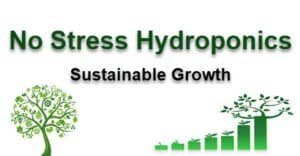
Are you looking to boost crop yields, reduce your carbon footprint, and build a more efficient farming system? Hydroponic farming may be the answer! This blog post will explore how modern hydroponic techniques are revolutionizing agriculture worldwide.
From drastically reducing water usage to year-round growing opportunities, there’s no denying that hydroponics is transforming how food is cultivated. Read on to learn all about what makes hydroponics so powerful and revolutionary!
What Is Hydroponic Farming And How Does It Work?
Hydroponic farming is a form of agriculture that involves growing plants without soil and instead relies on nutrient-rich water solutions to deliver nutrients directly to the plant’s root system. Hydroponics uses a liquid or solid medium, such as gravel, sand, or perlite, which allows the roots to be suspended in the nutrient solution.
Plants are held in place by a growing medium while they absorb the nutrients that have been dissolved into the water. The nutrient solution is regulated and monitored to provide optimal conditions for plant growth.
Hydroponic farming has many advantages over traditional soil-based agriculture, such as higher yields, reduced environmental impact, and lower water usage. In addition, since the plants are grown in a controlled environment, pests, and diseases can be more easily managed.
Furthermore, hydroponic farming allows for greater control of the growth conditions, such as temperature and lighting. This makes it an ideal method for indoor growing or in areas where the soil is unsuitable for traditional agriculture.
Despite its many benefits, hydroponic farming may only sometimes be the best option for all farms. For example, flooding can damage hydroponics systems and reduce yields in areas with heavy rains.
Additionally, nutrients can become depleted over time which requires regular replenishing. Finally, hydroponics is a relatively new technology and thus has higher initial costs than soil-based agriculture.
The Benefits Of Hydroponic Farming Over Traditional Agriculture
Hydroponic farming offers many benefits over traditional agricultural methods. Firstly, crops grown in a hydroponic system require much less water than those grown in soil—up to 90 percent less! This is incredibly beneficial for areas with limited access to fresh water sources and can help conserve precious resources.
Secondly, due to the controlled growing environment, hydroponic farming can yield larger crop harvests in a shorter time. Since there is no need to wait for the soil to be ready, farmers can begin planting almost immediately after setting up their system. Additionally, nutrient cycles are much faster as they don’t rely on natural sources such as rain and sun.
Finally, hydroponic growing systems are more resistant to pests and diseases than traditional agriculture. By controlling the environment in which crops are grown, farmers can reduce the spread of pathogens that may affect their crops. This benefits those who export their products and want to ensure it is safe for consumption.
The Modern Hydroponic Farming Techniques
Hydroponics involves the cultivation of plants in nutrient-rich water solutions without the use of soil. This method allows for otherwise difficult or impossible crops due to limited resources or environmental conditions. This technique is especially useful in areas with limited soil and water resources.
The nutrient solution in hydroponic farming consists of all the essential minerals needed for plant growth, such as nitrogen, phosphorus, potassium, calcium, magnesium, and iron.
This solution can be easily tailored to the needs of specific crops, allowing for more efficient crop production. Hydroponic farmers can also control and manipulate the environment to ensure optimal conditions for crop growth.
Hydroponic farming has seen an increase in popularity due to its numerous benefits. It uses less space than traditional farming methods, requires fewer resources, and produces higher yields with fewer pests or diseases.
In addition, it is environmentally friendly and does not contaminate soil or water. Hydroponic farming is also more convenient, as it can be used anywhere with access to a power source and nutrient solution.
Overall, hydroponic farming offers numerous advantages over traditional farming methods. This modern technology has the potential to revolutionize agriculture and help meet the ever-increasing demand for fresh, healthy food.
Tips for maintaining a healthy hydroponic farm
- Test the nutrient levels in your solution regularly and adjust them accordingly to ensure plants have access to sufficient nutrients for growth.
- Clean the system regularly with a mild bleach solution and replace all worn parts as needed. This will keep your hydroponic farm free of pests and diseases.
- Choose the right growing medium for your plants. Different types of plants require different media, so make sure to select the appropriate one.
- Ensure adequate lighting for your plants by installing high-quality full-spectrum grow lights that provide the ideal spectrum and intensity required for each crop.
- Keep temperatures within the range required for optimum growth. Too high or too low temperatures can be damaging to plants.
- Monitor the pH levels of your nutrient solution and adjust as needed since plants have different needs regarding pH.
- Provide adequate air circulation in the growing area by using fans, vents, and other methods to ensure the plants can access the oxygen they need for growth.
- Make sure to stay on top of any pests or diseases that may appear in your hydroponic farm, and take immediate action to address them if necessary.
- Water your plants regularly with nutrient solution and keep a schedule for replacing an old solution with a fresh one.
- Lastly, practice good hygiene when handling plants, nutrient solutions, and the equipment used in your hydroponic farm to minimize contaminants.
Conclusion:
In closing, modern hydroponic farming techniques have come a long way in recent years. Hydroponic farmers can produce high-quality fruits and vegetables year-round using state-of-the-art equipment and technology.
If you’re considering starting a farm or are already a farmer looking to increase production, consider investing in hydroponics. You can grow healthy plants that thrive in any climate with proper care and attention.
